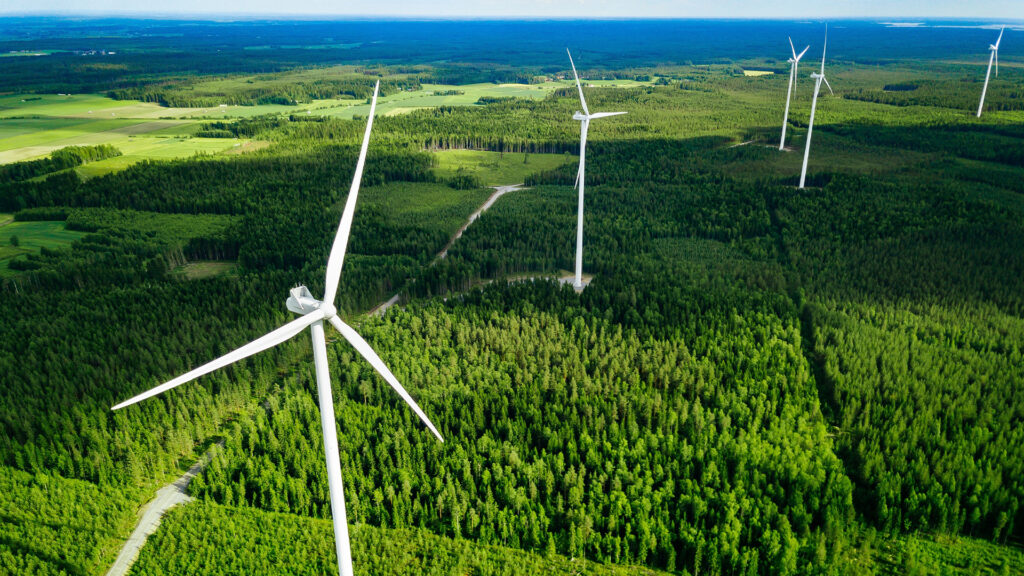
Demand side flexibility
Demand flexibility, or demand response, means reducing, increasing or temporarily shifting energy consumption according to the availability of energy, the energy price, and the emissions caused by energy production. The share of renewable energy sources in electricity production is growing rapidly. The production of weather-dependent renewable energy sources varies a lot, sometimes electricity is produced more than the demand, other times the electricity production is not enough to cover the demand. For the electricity grid to function reliably, demand and supply must be kept in balance. When clean electricity is produced in abundance, it is cheaper to use and store, for example, in the battery of an electric car. On the other hand, in moments of low electricity production, the use of electricity should be reduced due to both the high price and the higher emissions of electricity production. In many homes, the price of electricity is monitored, and activities are planned in such a way as to avoid high electricity consumption during the hours of expensive prices. This is demand flexibility.
In homes, demand flexibility often means changes in energy behavior and everyday practices, as well as scheduling energy-intensive activities at times of low electricity prices. Typical examples of home demand flexibility are reducing the electric heating during working hours or during trips, heating water at night, avoiding the use of an electric sauna when the price of electricity is very high, and charging an electric car in a timed manner in the early hours of the night. Demand flexibility can also be implemented with smart energy solutions, such as energy consumption metering and management systems, and by utilizing our own solar panel production and energy storage. Energy management systems automatically optimize the home's energy consumption according to the electricity price, the weather forecast and the home's electricity consumption (and production) profiles. Automation systems may also enable participation in the electricity market, where aggregated flexible capacity can be sold. With the help of electricity consumption monitoring and management systems, householders can monitor home electricity consumption and target electricity saving and consumption shift measures to the most effective consumption targets. Automation systems can also provide other monitoring, control and safety features.


Future energy solutions
Energy production will continue to be increasingly based on renewable energy sources. On sunny and windy days, renewable energy is abundantly available, while on calm frosty days — days when consumption is high — production is low. Timing consumption for times when renewable energy is abundantly available will be advantageous both economically and in terms of environmental impact. Electricity price fluctuations will be strong from time to time. Prices can rise to record highs or even fall to negative levels. The demand flexibility is expected to smooth out price spikes. Reducing electricity consumption and, on the one hand, shifting the time from peak consumption hours to low consumption hours help keep the electricity bill reasonable and, on the other hand, promote the production and use of clean energy. Since demand flexibility increases the electricity market's confidence that consumption will be flexible in moments of scarce electricity production, the market will not price electricity as expensive as it would be without the effect of demand flexibility. Therefore, demand flexibility benefits all electricity users, including fixed-price electricity contract holders. The importance of demand flexibility is emphasized more and more as the energy system becomes carbon neutral. Electricity production is increasingly emission-free, but the growing share of fluctuating renewable electricity production encourages flexible measures on the consumption side.
Demand flexibility in households
Household electricity consumption and flexible loads are small compared to public buildings or industry. Flexible load means the amount of electricity consumption that can be changed without significantly affecting the comfort of living. Although the flexibility load of one household may seem small, the demand flexibility of thousands of households is significant at the level of the energy system. In households, people can promote demand flexibility and energy saving by paying attention to items that consume a lot of energy, such as heating, air conditioning, electric car charging, and also to those that consume less energy, such as household appliances and lighting. Especially in the timing of the heating of an electrically heated apartment and the periodic lowering of temperatures, there is a great potential for flexibility in consumption. In order to know when it is a good time to change (decrease/increase/shift) electricity consumption, it is useful to follow the electricity price and price forecasts. Automation systems that enable demand flexibility utilize a variety of information, for example electricity price, weather forecast, indoor and outdoor temperatures, and room and/or point-of-use energy consumption data. There are many kinds of automation systems, from consumption point specific smart plugs to whole-home energy consumption optimization systems.
More and more Finnish homes have a spot-price electricity contract, which means that the price of electricity is determined day-ahead for the next 24 hours based on the electricity market's production and consumption estimates. The previously popular night-time electricity contract also supports demand flexibility. Night-time electricity, or so-called time-of-use electricity, means that the price of electricity is lower during the night hours than during the daytime hours. Since electricity consumption in homes is at its highest in the morning and in the hours after the workday, shifting consumption, for example backup electric heating, to nighttime has benefited homes with night-time electricity contracts and evened out daytime electricity consumption peaks.
